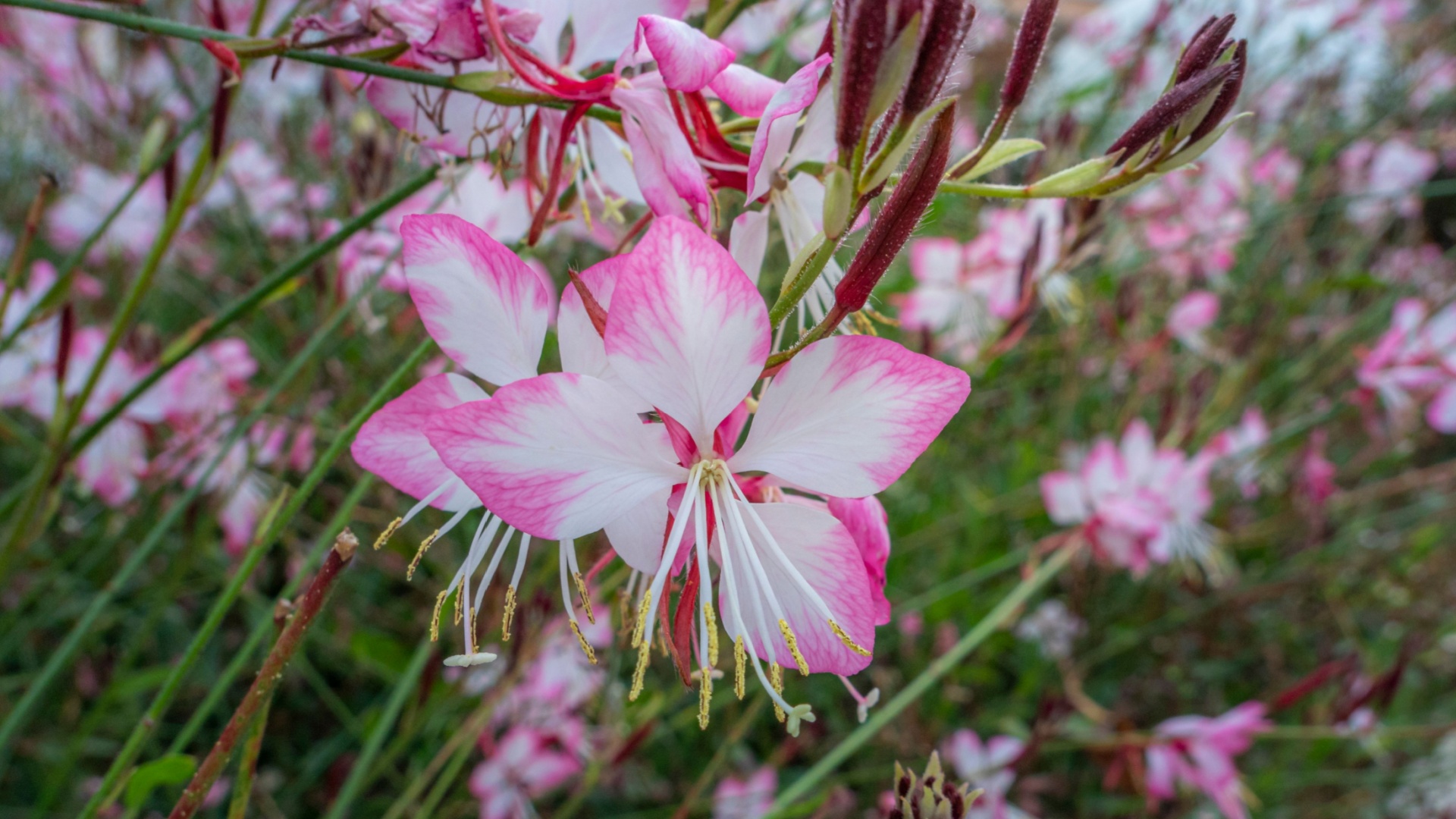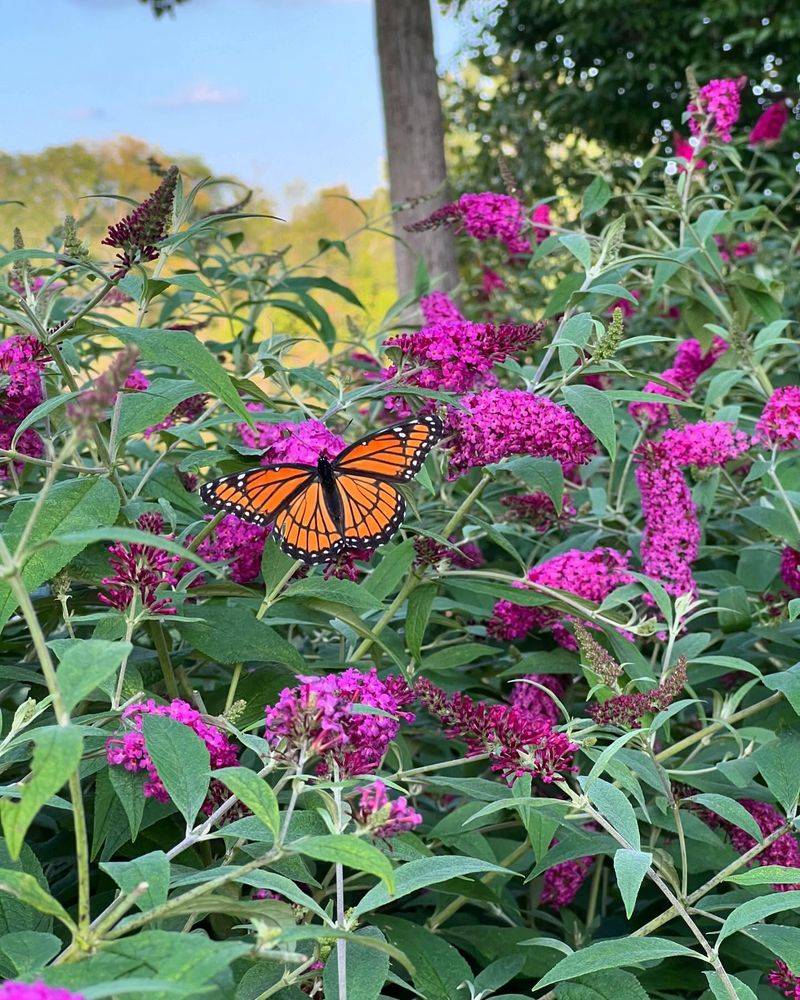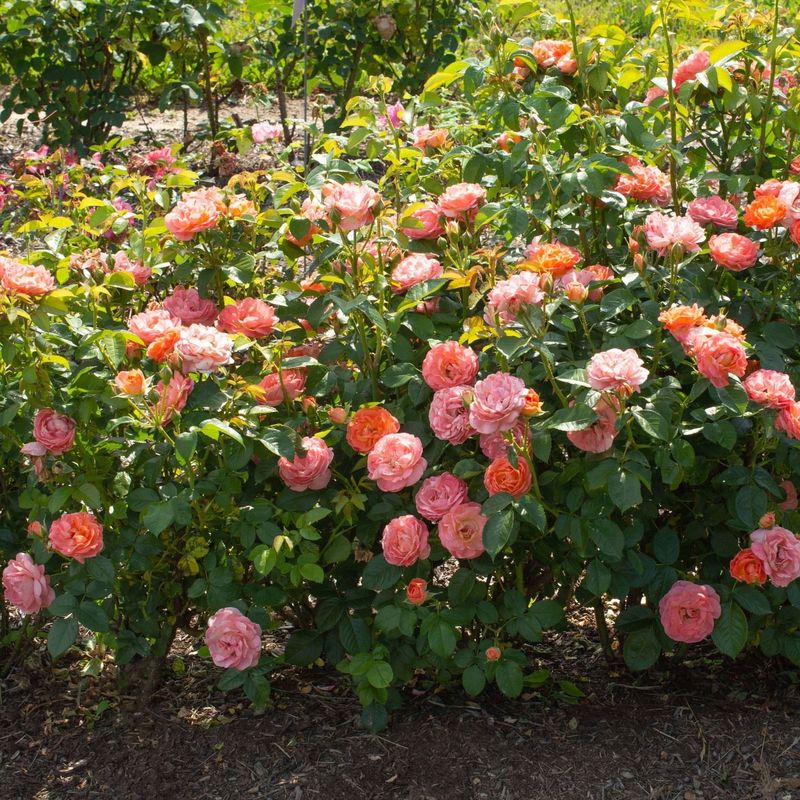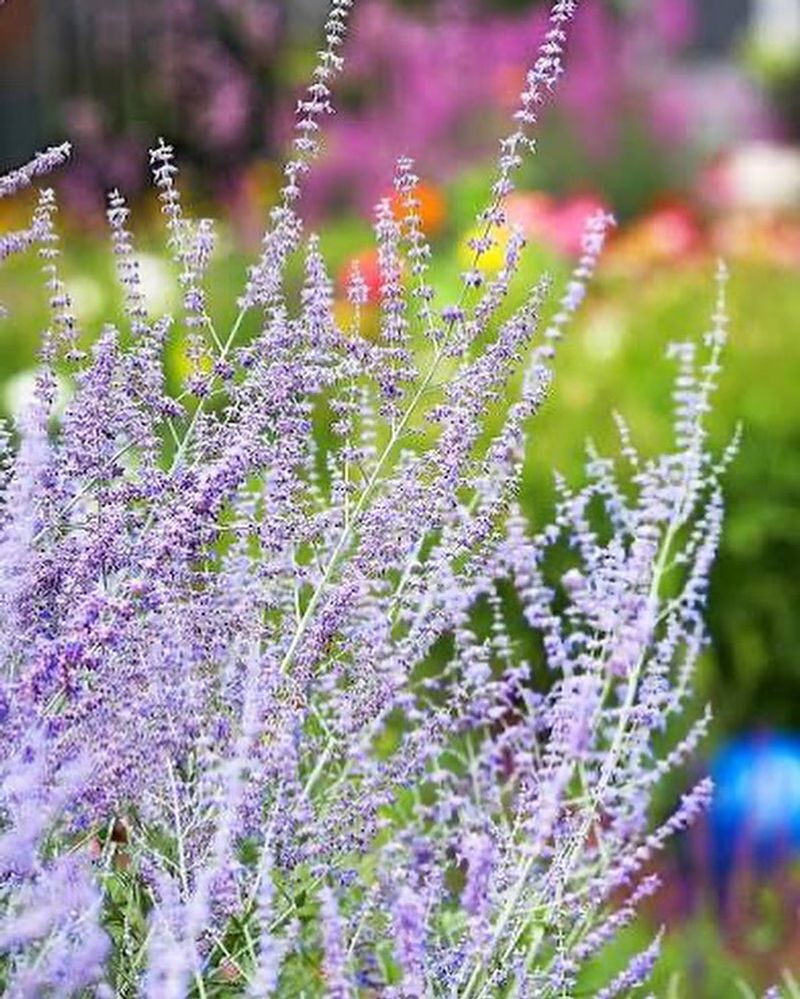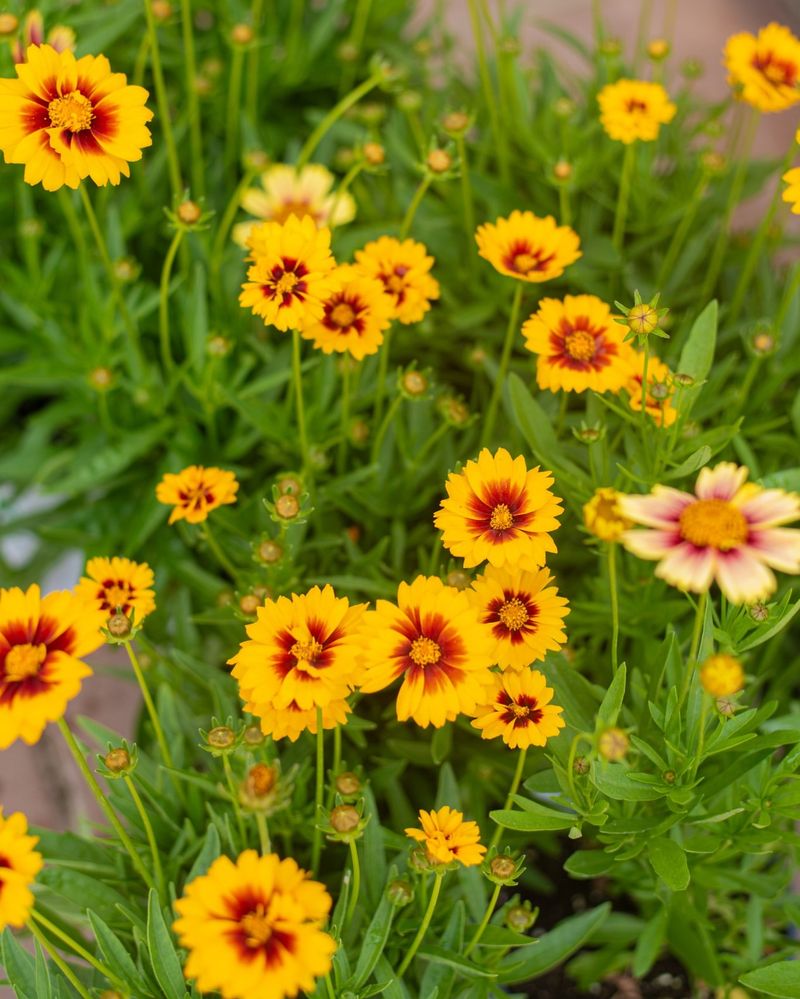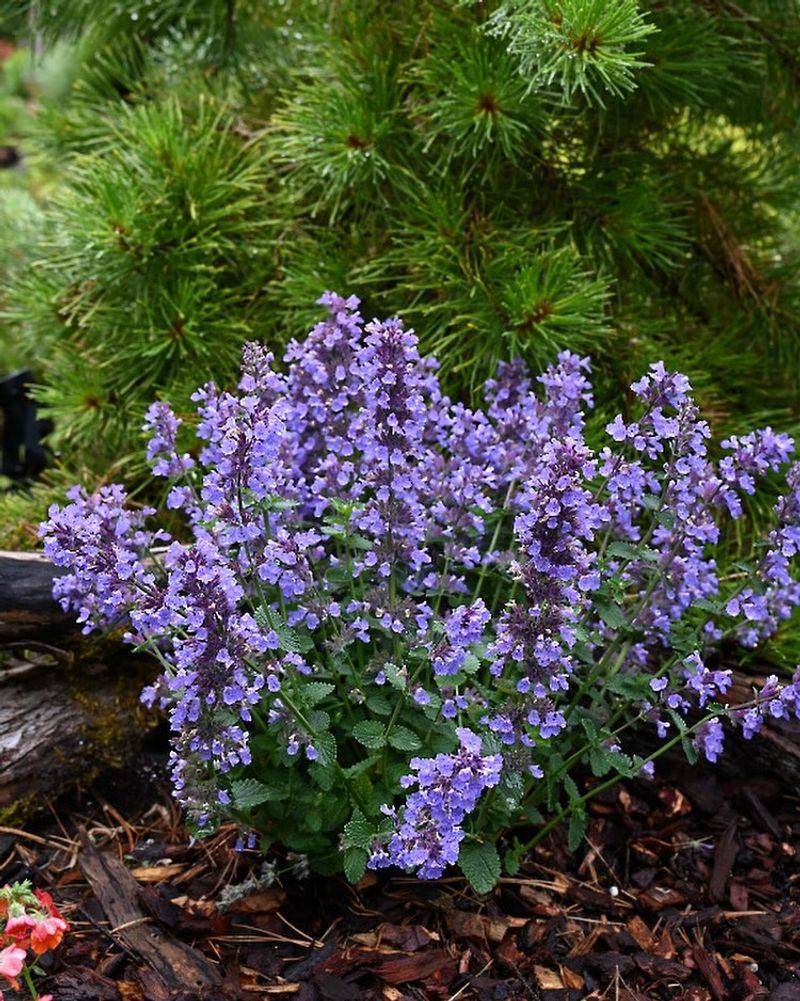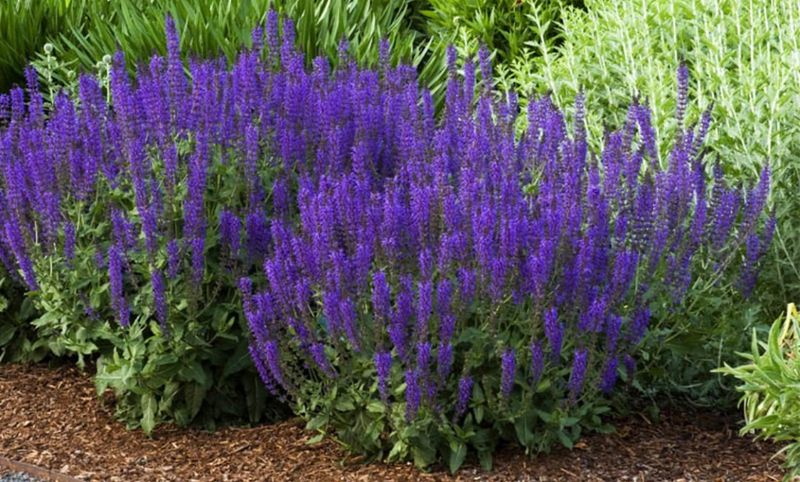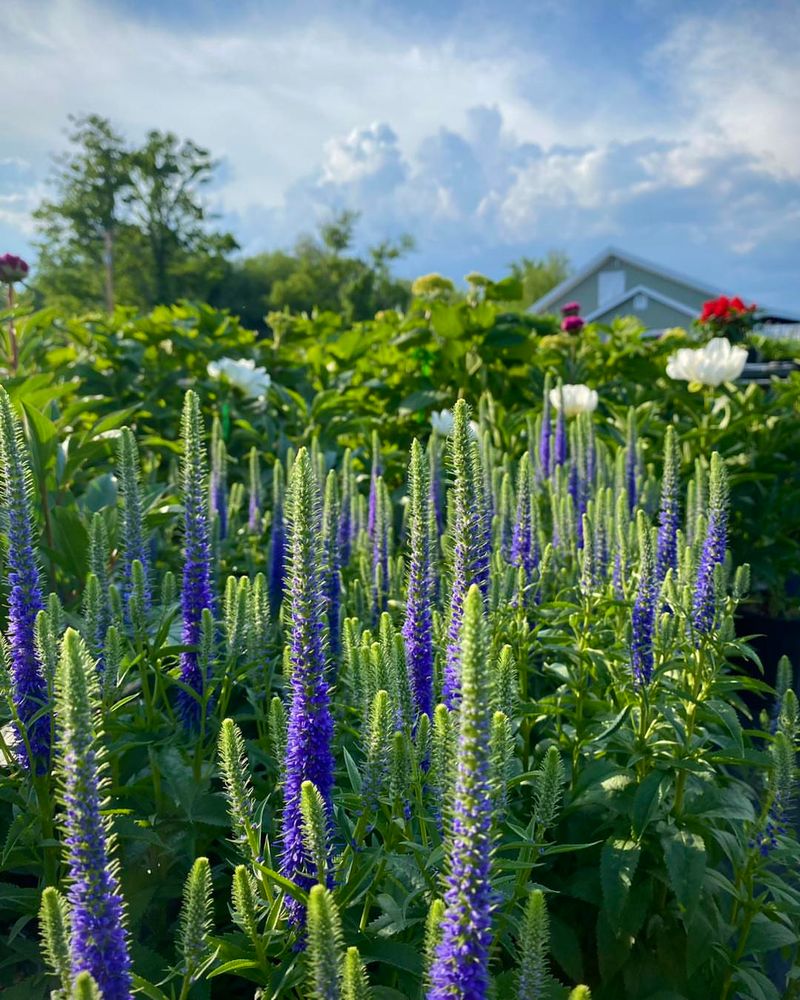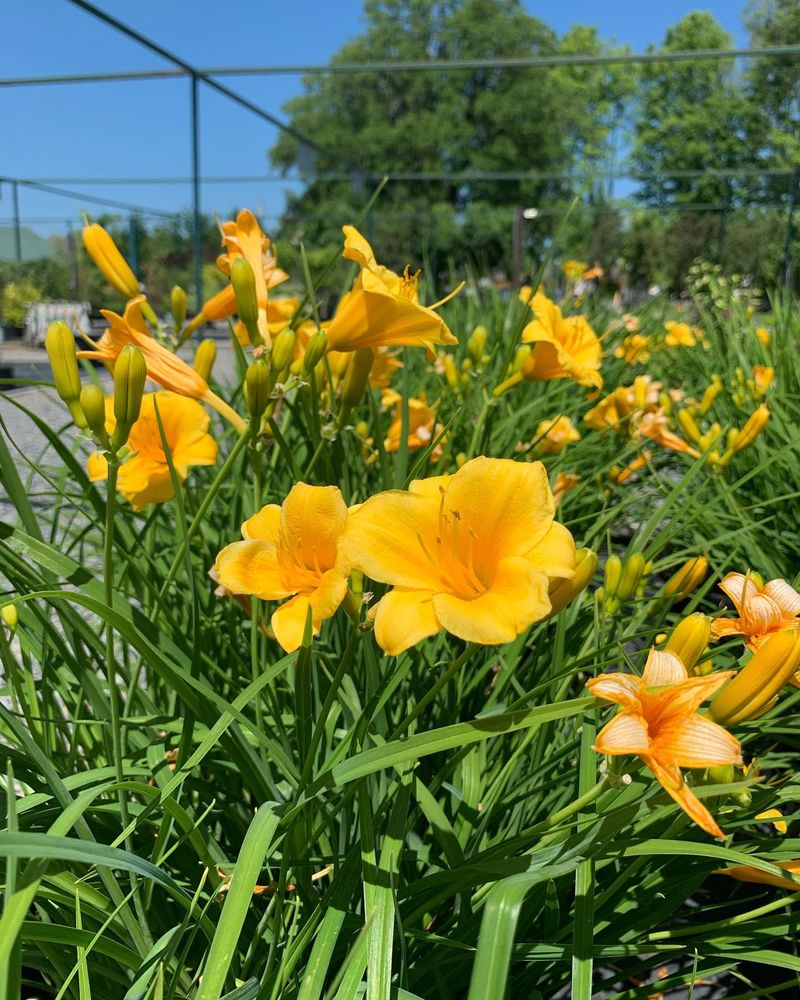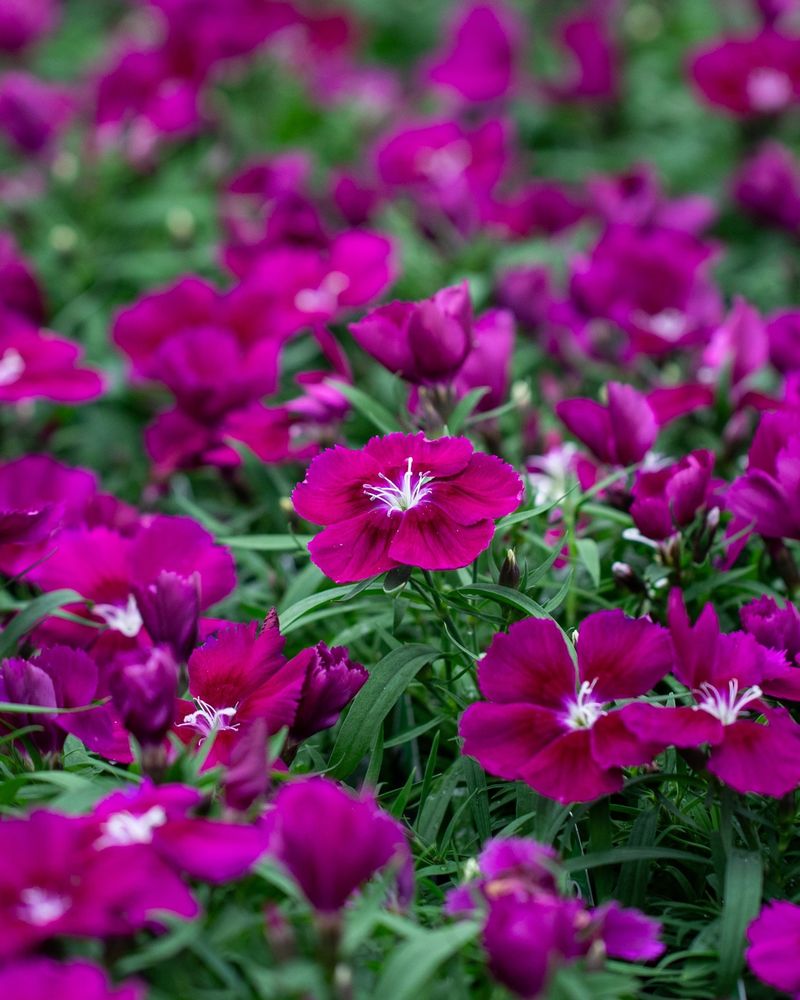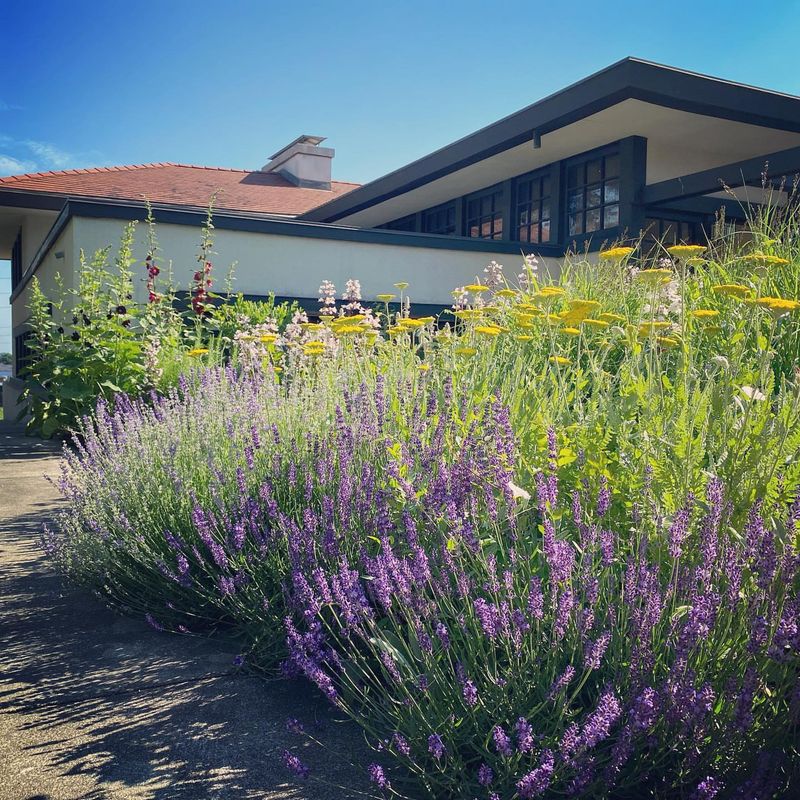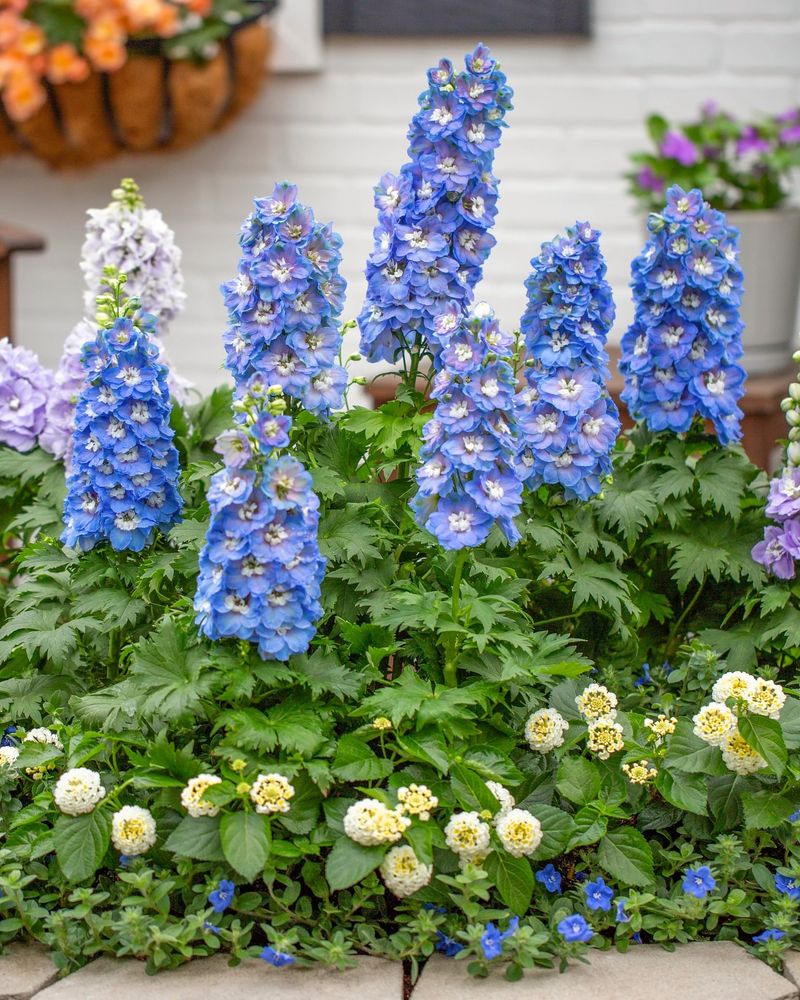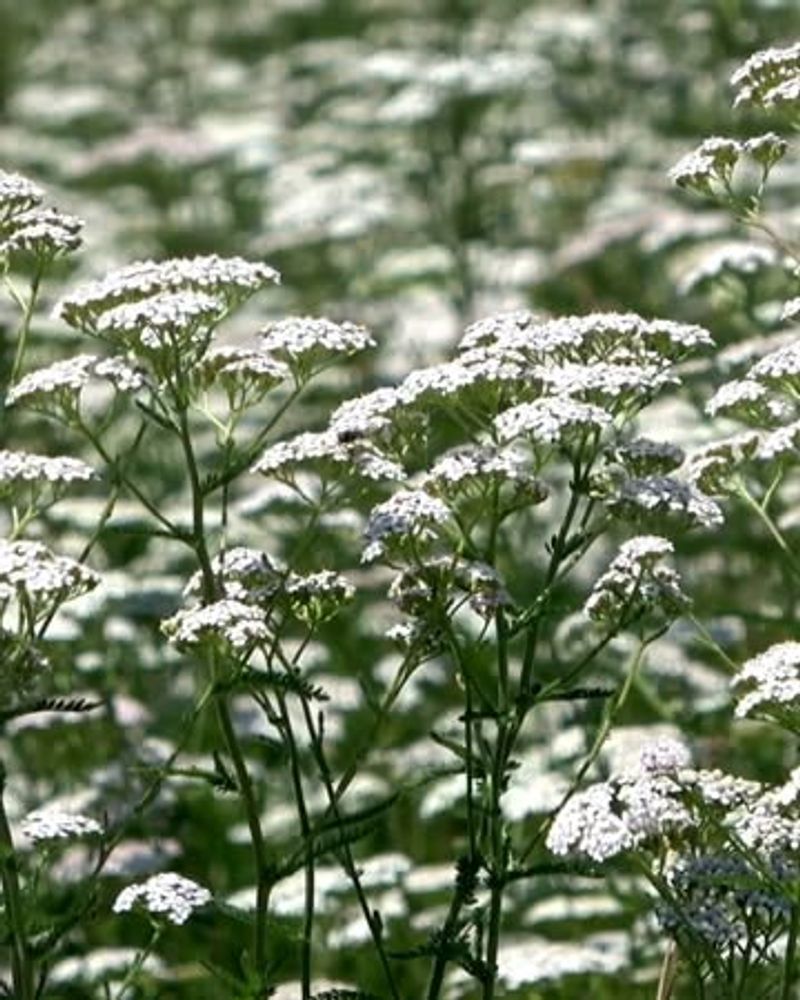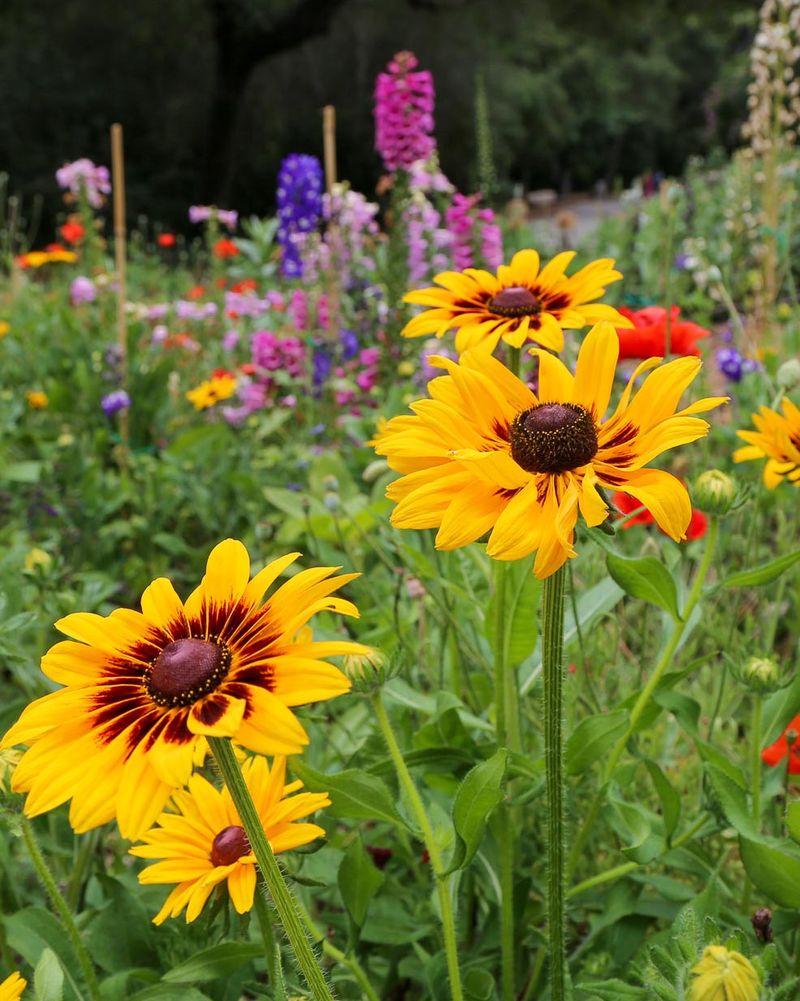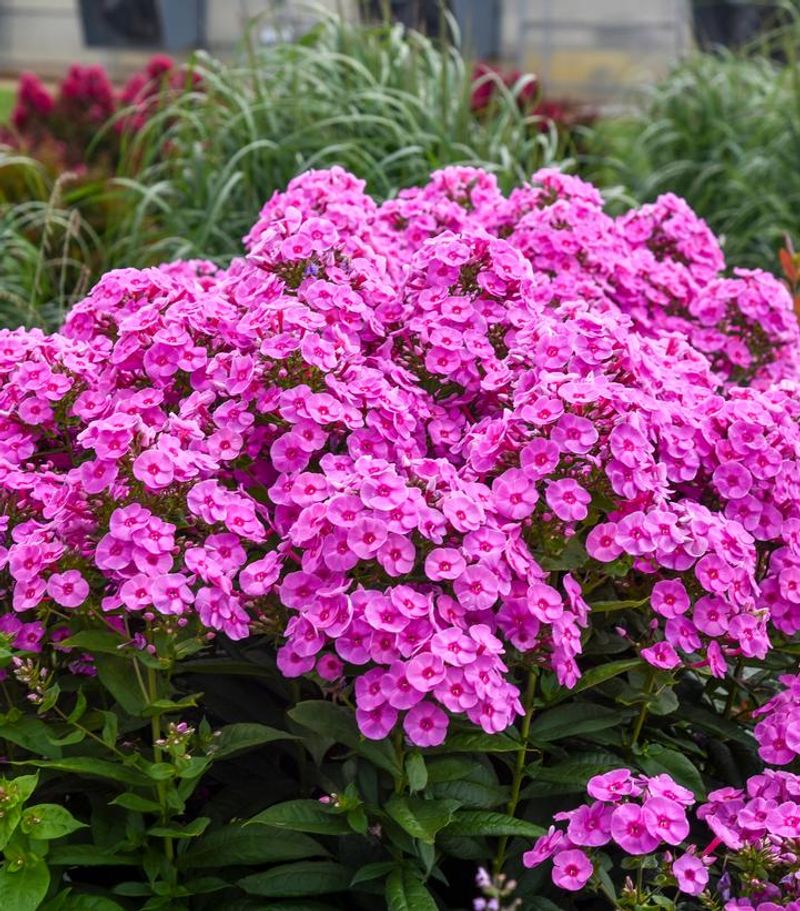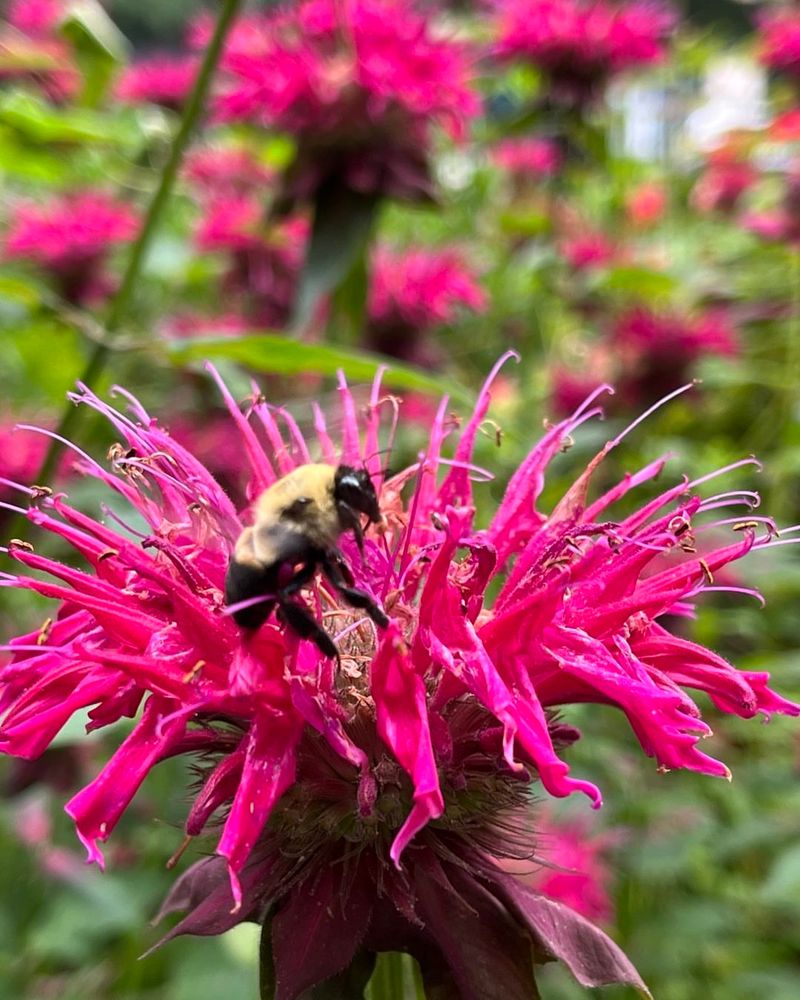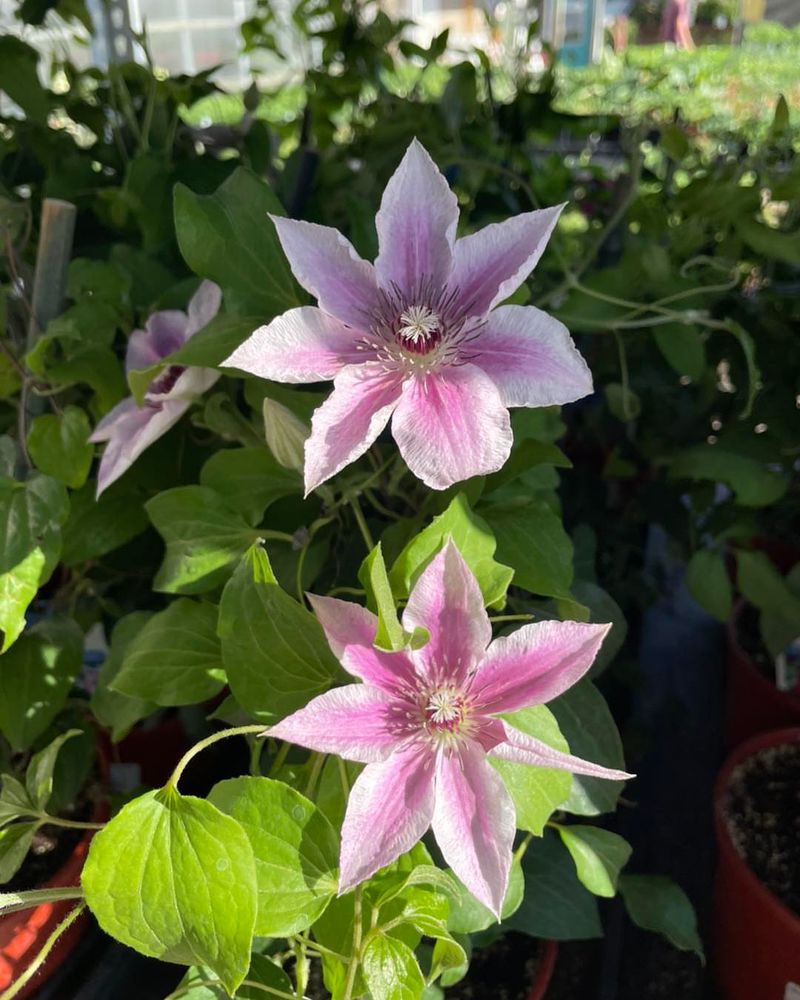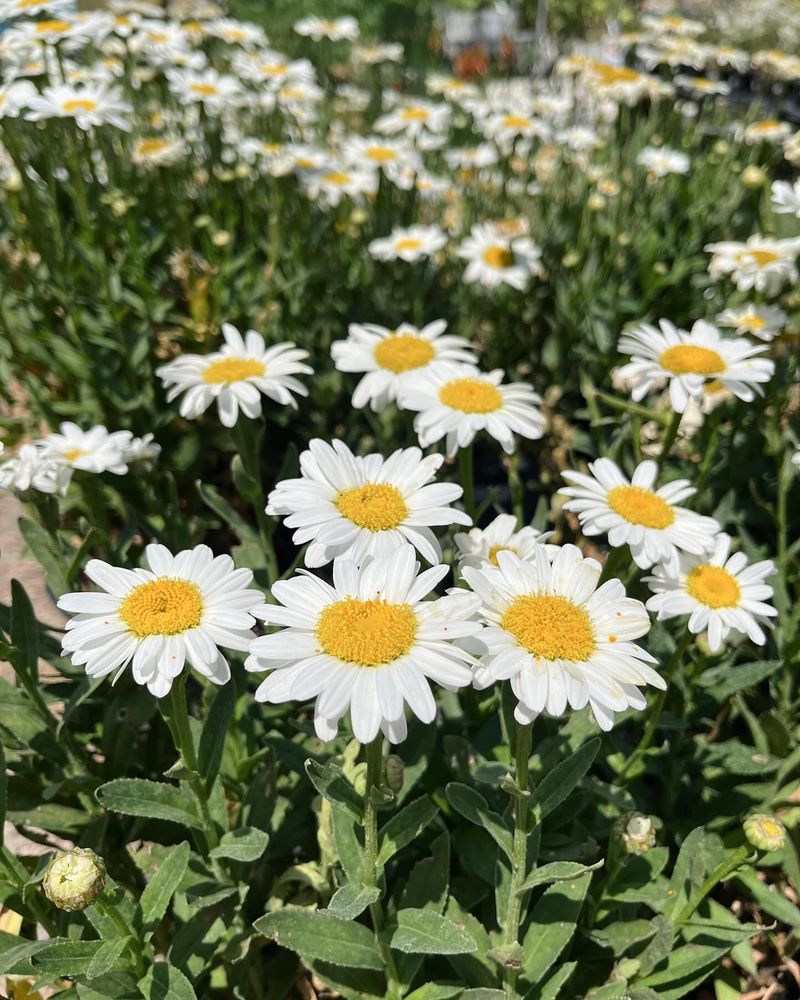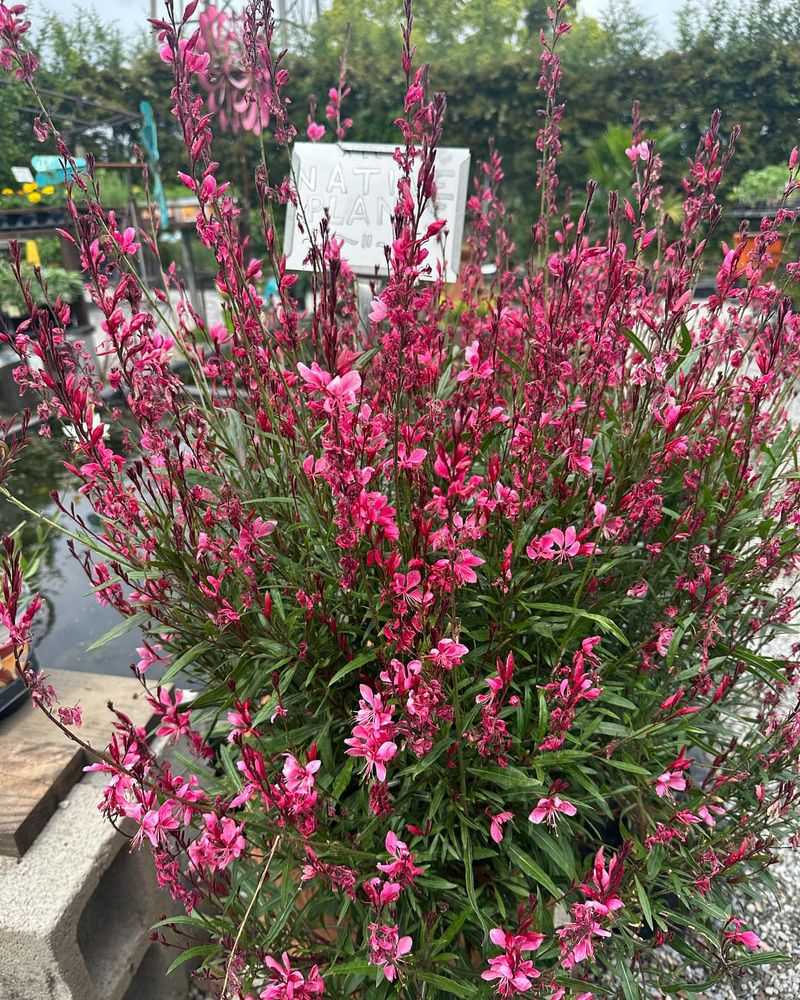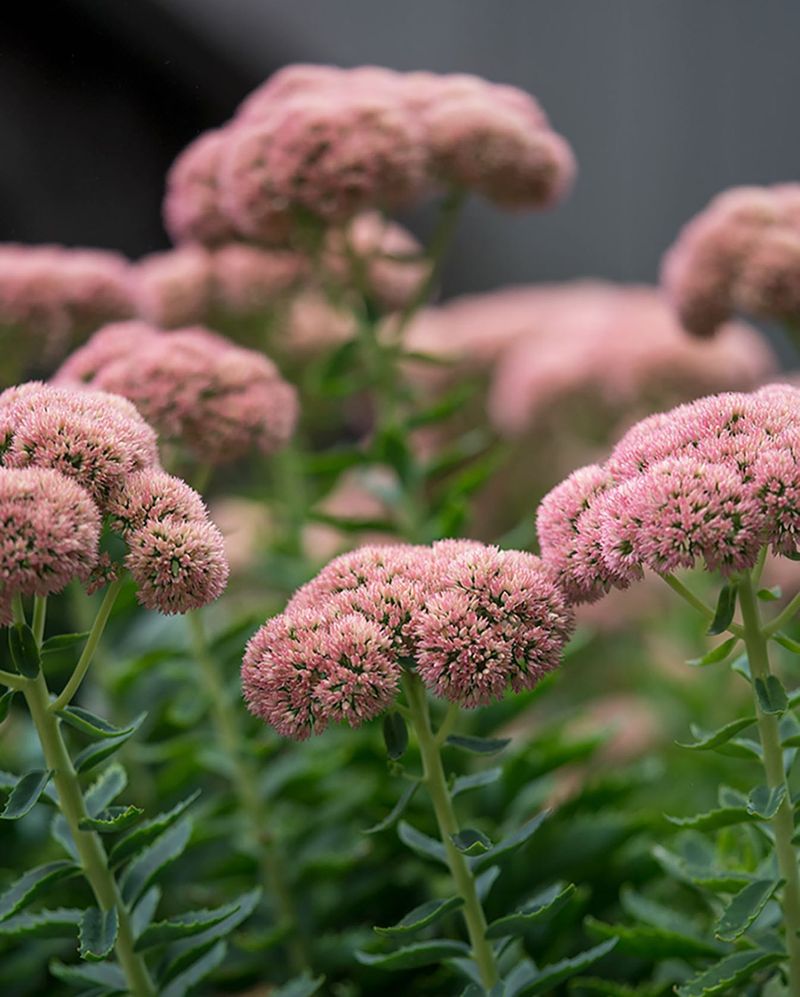Gardening in South Dakota brings unique challenges and rewards, especially when it comes to extending your blooming season. With the right pruning techniques, many plants will reward you with a second flush of beautiful flowers.
Knowing which plants respond best to a mid-season trim can transform your garden from summer splendor to fall magnificence.
1. Butterfly Bush (Buddleia)
Summer heat often causes butterfly bushes to slow down flowering. A quick trim back by one-third encourages fresh growth and new flower buds to form rapidly.
The sweet nectar of these renewed blooms attracts countless butterflies to South Dakota gardens through late summer and early fall. For best results, make clean cuts just above leaf nodes and remove spent flower heads promptly.
2. Knock Out Roses
Nothing beats the resilience of Knock Out roses in South Dakota’s climate. After their initial summer show, these hardy shrubs benefit from a moderate pruning to stimulate another round of blooms.
Remove faded flowers and cut stems back by about one-third. The plant responds quickly with fresh growth and new buds. Even as temperatures begin to cool, these determined roses continue producing vivid blooms until the first hard frost.
3. Russian Sage
Beloved for its silvery foliage and lavender-blue flower spikes, Russian sage takes on new life after a mid-season haircut. Cut back the leggy stems by half once the first bloom fades.
Within weeks, fresh growth emerges, creating a more compact plant crowned with vibrant new flowers. The aromatic foliage deters deer and rabbits, making this a practical choice for South Dakota gardens where wildlife visits frequently. Russian sage thrives in our hot, dry conditions.
4. Coreopsis
Sunny yellow coreopsis brings cheerful color to South Dakota gardens all season long. When flowering slows in midsummer, grab your shears and cut the plants back by half.
This seemingly harsh treatment prompts an explosion of fresh growth and buds. The daisy-like flowers return with renewed vigor, creating bright spots of color that persist into fall. Coreopsis handles our temperature swings with ease, making it a reliable rebloomer after pruning.
5. Catmint (Nepeta)
Gray-green aromatic foliage topped with lavender-blue flower spikes makes catmint a favorite in prairie gardens. After the first flush of blooms fades, cut the entire plant back by one-third.
The response is remarkable – fresh growth emerges quickly, followed by another wave of flowers. Bees and butterflies flock to the renewed blooms while deer stay away. Catmint’s drought tolerance makes it perfect for South Dakota’s variable rainfall patterns.
6. Salvia ‘May Night’
Deep purple spikes of ‘May Night’ salvia create dramatic vertical elements in the garden. When the first round of blooms begins to fade, cut flower stalks back to the basal foliage.
This rejuvenation pruning stimulates fresh growth and a second wave of those stunning purple spires. Hummingbirds can’t resist the nectar-rich flowers, bringing extra life to your South Dakota garden. The plant’s drought tolerance means it keeps performing even during dry spells.
7. Veronica ‘Sunny Border Blue’
Tall spikes of true blue flowers make Veronica a standout in any garden. After the initial bloom period, cut the spent flower stems down to the fresh foliage at the base.
New flower spikes emerge within weeks, bringing that rare true blue color back to your garden. Pollinators love these nectar-rich blooms, creating a buzzing hub of activity. South Dakota’s sunny days intensify the striking blue color of these persistent bloomers.
8. Daylilies (Reblooming Varieties)
Reblooming daylily varieties like ‘Stella de Oro’ and ‘Happy Returns’ respond beautifully to post-bloom pruning. Remove spent flower stalks all the way to the base once the first round of blooming finishes.
This redirects the plant’s energy into producing new flower scapes. Unlike traditional daylilies that bloom once, these special varieties continue the show through summer and into fall. Their tough nature handles South Dakota’s temperature extremes with remarkable resilience.
9. Dianthus (Pinks)
Spicy-scented dianthus brings old-fashioned charm to South Dakota gardens. After the first impressive flush of blooms, shear the plants back by about one-third.
This neat trim stimulates fresh growth and another round of those delightful fringed flowers. Their blue-green foliage stays attractive even between blooming cycles. Many varieties handle our winter conditions with ease, returning year after year with increasing vigor and flowering potential.
10. Lavender
Fragrant lavender thrives in South Dakota’s well-drained soils and sunny conditions. After the first flowering period, trim the spent blooms and about an inch of stem to encourage reblooming.
Many varieties respond with a smaller but still fragrant second show of purple flower spikes. This pruning also helps maintain the plant’s compact shape. The aromatic oils are most concentrated in morning hours, making this the perfect time to harvest stems for drying.
11. Delphinium
Towering spires of blue, purple, or white delphinium create dramatic backdrops in South Dakota gardens. Once the magnificent first bloom finishes, cut the flower stalks down to the basal foliage.
With proper care and regular watering, many varieties produce a second, smaller bloom in late summer. These stately flowers appreciate some afternoon shade in our hot climate. Add stakes for support to prevent the tall stems from breaking in South Dakota’s notorious summer winds.
12. Yarrow
Flat-topped clusters of tiny flowers make yarrow a prairie garden favorite. When the first blooms begin to fade, cut the flower stems back to the base of the plant.
Fresh foliage quickly emerges, followed by new flower stems. The feathery, aromatic foliage remains attractive even between blooming cycles. Yarrow’s exceptional drought tolerance makes it perfect for South Dakota’s hot, dry summers, thriving where other plants struggle.
13. Black-eyed Susan (Rudbeckia)
Golden daisy-like flowers with distinctive dark centers make Black-eyed Susans quintessential prairie plants. Deadheading spent blooms regularly encourages continuous flowering throughout the season.
For plants that have finished their first major flush, a more substantial trim back by one-third rejuvenates the entire plant. The cheerful yellow blooms return with fresh vigor, brightening South Dakota gardens into fall. Their native prairie heritage makes them naturally adapted to our local growing conditions.
14. Garden Phlox
Fragrant clusters of pink, purple, or white flowers make garden phlox a summer staple. After the first magnificent display fades, cut the stems back by half their height.
This rejuvenation pruning often results in a second, smaller bloom cycle before frost. The sweet scent attracts butterflies and hummingbirds to South Dakota gardens. Choose mildew-resistant varieties to handle our summer humidity without leaf problems.
15. Bee Balm (Monarda)
Unique whorled flowers in shades of red, pink, or purple make bee balm a pollinator magnet. Once the first spectacular bloom finishes, cut the stems back to just above a set of healthy leaves.
New growth emerges quickly, often producing a second round of those distinctive flowers. Hummingbirds and beneficial insects flock to the nectar-rich blooms. Native varieties are particularly well-adapted to South Dakota’s growing conditions, handling both drought and cold with ease.
16. Clematis (Late-Flowering Types)
Late-flowering clematis varieties (Group 3) respond beautifully to hard spring pruning and benefit from summer trimming too. After the first flush of blooms, lightly trim back the flowered stems.
This encourages side branches to develop and produce more of those stunning star-shaped flowers. Provide consistent moisture during dry spells to support reblooming. In South Dakota gardens, these climbing vines add vertical interest and can transform fences and trellises with waves of colorful blooms.
17. Shasta Daisy
Classic white daisies with sunny yellow centers brighten any South Dakota landscape. When the first abundant bloom begins to fade, cut flower stems back to the basal rosette of leaves.
This rejuvenation often triggers another round of those cheerful blooms. The simple, perfect flowers attract butterflies while their sturdy stems resist toppling in summer storms. Their drought tolerance once established makes them reliable performers in South Dakota’s variable climate.
18. Gaura (Whirling Butterflies)
Airy wands of white or pink flowers dance above the foliage, creating movement in the garden. When flowering slows in midsummer, trim plants back by about one-third.
This seemingly harsh treatment stimulates fresh growth and another wave of those delicate butterfly-like blooms. Gaura handles South Dakota’s hot, dry conditions with remarkable resilience. The deep taproot helps it survive drought while still producing those ethereal flowers that appear to float above neighboring plants.
19. Autumn Joy Sedum
Despite its name suggesting fall blooms, Autumn Joy benefits from early summer pruning. Cutting stems back by one-third in June creates more compact plants with additional flower heads.
The flat-topped flower clusters start pale green, gradually deepening to rich pink and eventually rusty red as fall approaches. This extended color show provides lasting interest in South Dakota gardens. The succulent foliage handles drought with ease, making this a low-maintenance choice for busy gardeners.

